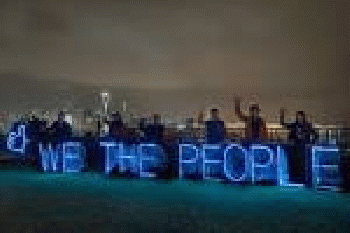From Smirking Chimp
The United States is going in the wrong direction on a wide range of social, economic and foreign policy issues and people are justifiably upset and angry. One question we are regularly asked is: "What should I do?" In our last two newsletters, we examined the stages of successful social movements to show how movements can progress toward victories. This week, we attempt to answer the question by describing the fifth class of the Popular Resistance School,"The Roles of Individuals and Movements" and how to be effective at them.
There are many necessary roles in the popular movement at this time, which means there is something for everyone to do. We are at a critical moment when the 15 core issues of the movement for economic, racial and environmental justice as well as peace are in crisis and people are organizing to solve them.
As we wrote in 2011, during the preparations to occupy Freedom Plaza in Washington, DC, on a broad range of issues from taxing the rich to getting money out of politics to strengthening the social safety net and more, there is already majority support. In 2014, Josh Sager demonstrated that while in electoral politics the US appears to be center-right (and shifting ever rightward), the people's positions are center-left. National consensus for solutions to the crises is growing despite the lack of commercial media coverage.
The necessary ingredients for winning major social changes -- national consensus on issues and a mobilized "movement of movements" -- are developing, but these ingredients merely create the conditions for change. To realize those changes, we need to understand what the various roles are that people need to take on and how to be effective in those roles by avoiding the pitfalls that could undermine our work toward the society we desire to create.
Four Essential Roles In The Movement
There are four basic roles in a movement and each one is needed. Some people can play more than one role or can move from one to another and some will be most comfortable focusing on one role. The prominence of each role changes throughout the development of a successful social movement, as the tasks of each stage, differ. People often gravitate toward one role and that can be seen early in life in the way they respond to challenges. Review this list and consider which roles resonate with you.
- The Advocate or Reformer: The advocate is most drawn to working with those in authority to create change, perhaps through educating legislators, writing policy or using the courts. The movement role played by the advocate is to translate the demands of the people's movement for the power structure and to act as a watchdog for the movement.
- The Organizer or Change Agent: The organizer works to bring people together to solve problems, especially in a way that is empowering such as using horizontal, democratic processes for making decisions. The movement role played by the organizer is to grow the movement and to facilitate coordinated strategic activities.
- The Helper or Citizen: The helper is typically a more mainstream person who is drawn to providing direct aid to solve problems. If a neighbor can't shovel the snow off their sidewalk, the helper will do it. The role that the helper plays in the movement is to show that there is widespread support for the aims of the movement and to bring greater legitimacy to the movement.
- The Rebel: The rebel is one who is most likely to make a lot of noise about an injustice. When something bad happens, the rebel wants everyone to know and will confront the power holders about it. The role that the rebel plays is to highlight injustice and to take direct action in order to create the tension required for changes to occur.
To be effective, the roles need to be handled in ways that achieve the grand strategy of the movement, i.e., (1) To grow the movement by pulling people toward it, especially people in the power structure. (2) To create unity in the movement so solidarity is strengthened and people work together for common objectives. And, (3) To deepen our understanding of the issues and the solutions to injustices and crisis situations that are needed.
Each of these roles can be played in ways that achieve these strategies or, if done poorly, can undermine the movement. For example, an effective advocate will be accountable to the people in the movement and will represent their views, while an ineffective advocate may start to ally more with the power holders than with the people and might try to convince the movement to compromise in ways that violate their fundamental goals.
An organizer will ideally provide the tools and support that empower people to be creative and to make decisions and take actions that are strategic, while an ineffective organizer will behave in a way that is hierarchical, ordering people to take action and excluding diverse views instead of building consensus for the action. The heads of some non-governmental organizations may come to believe they are the movement, rather than recognizing their power comes from the movement.
The rebel can create conflicts with police or others that repel people and push them away from the movement. Using overly strident tactics can actually empower the police or those in power to crack down on the movement. Done well, the rebel shows courage that becomes contagious. We discussed this and more with George Lakey, an activist who has been involved in many social movements and has trained many activists, on the Clearing the FOG podcast, available here on Mondays.
In particular, Lakey admonishes people to avoid being drawn into conflict by right-wing white supremacists because this will legitimize state suppression of the movement and repel people who are unpersuaded from the movement.
(Note: You can view every article as one long page if you sign up as an Advocate Member, or higher).





